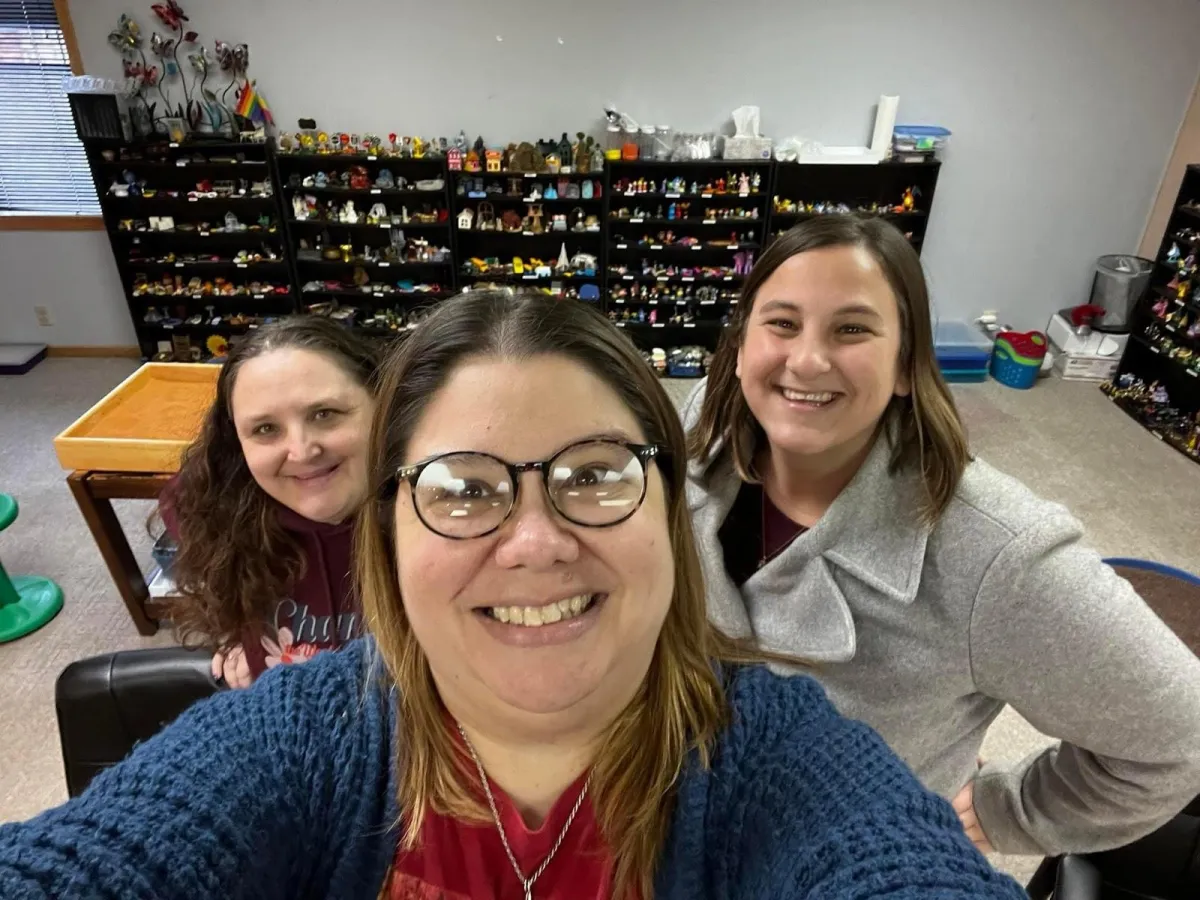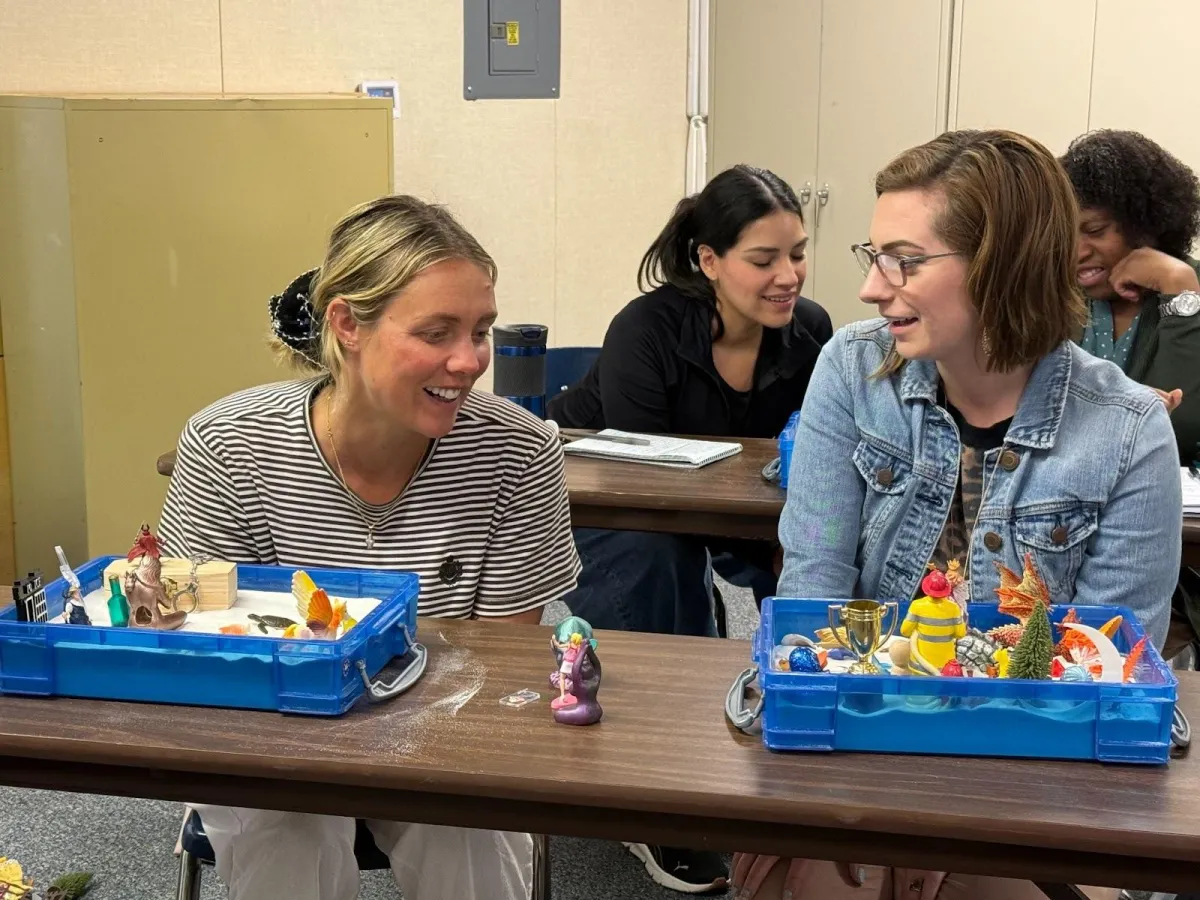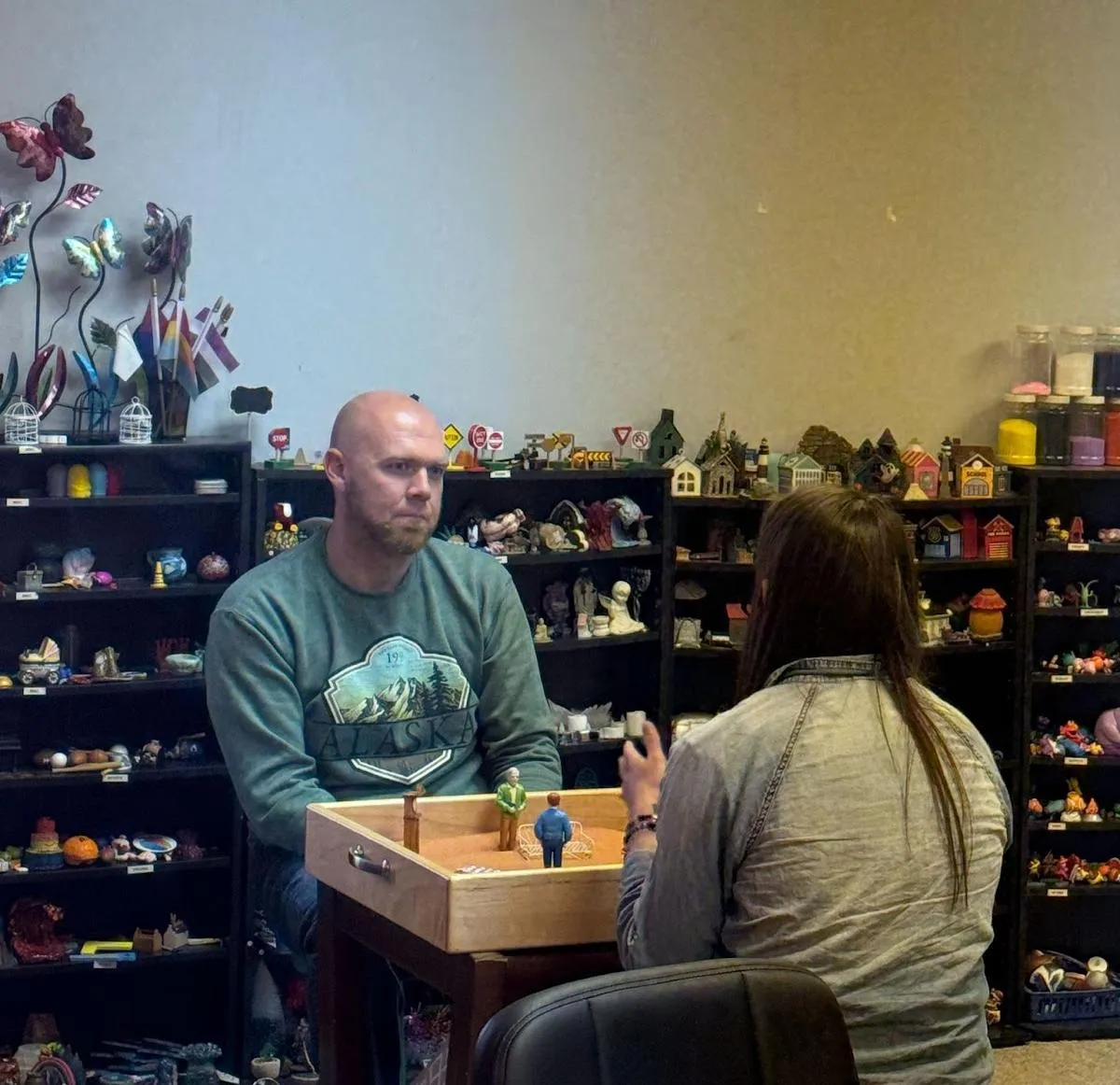
Creating Connection, Capability and Confidence
Quick Start Guide for Child Therapists
Tiny Toys, Big Messages: Decode the top 6 themes in child therapy and learn how to respond for faster client progress.
🔍 Sound Familiar?
You find yourself wondering “Is this just play… or is it something more?”
You notice recurring themes in sessions—but aren’t always sure what they mean or how to use them.
You worry you’re missing the deeper messages behind your client’s sandtray scenes, superhero battles, or burial rituals.
You feel stuck when trying to explain your observations to caregivers or document meaningful progress.
If this is you, you’re not alone—and you don’t have to keep guessing.

As a play and sandtray therapy trainer, I’ve taught over 500 child therapists and worked with nearly 1,000 children and families in private practice.
Over the past 14 years, I’ve noticed clear patterns emerge—what I call “themes” in therapy.
A theme is a recurring emotional or relational pattern that shows up in a child’s play—through their stories, symbols, roleplay, or sandtray scenes. It’s how children communicate their inner world when words aren’t enough.
When you understand these themes—how they show up, what they mean, and what need they’re expressing—you can respond with clarity, confidence, and compassion.
You’ll know what to do next in session, how to track progress, and how to explain the child’s journey to caregivers.
After years of practice and training others, I created this Quick Start Guide to help you master 6 essential play and sandtray themes…
So you can stop second-guessing and start translating play into powerful, purposeful therapy!
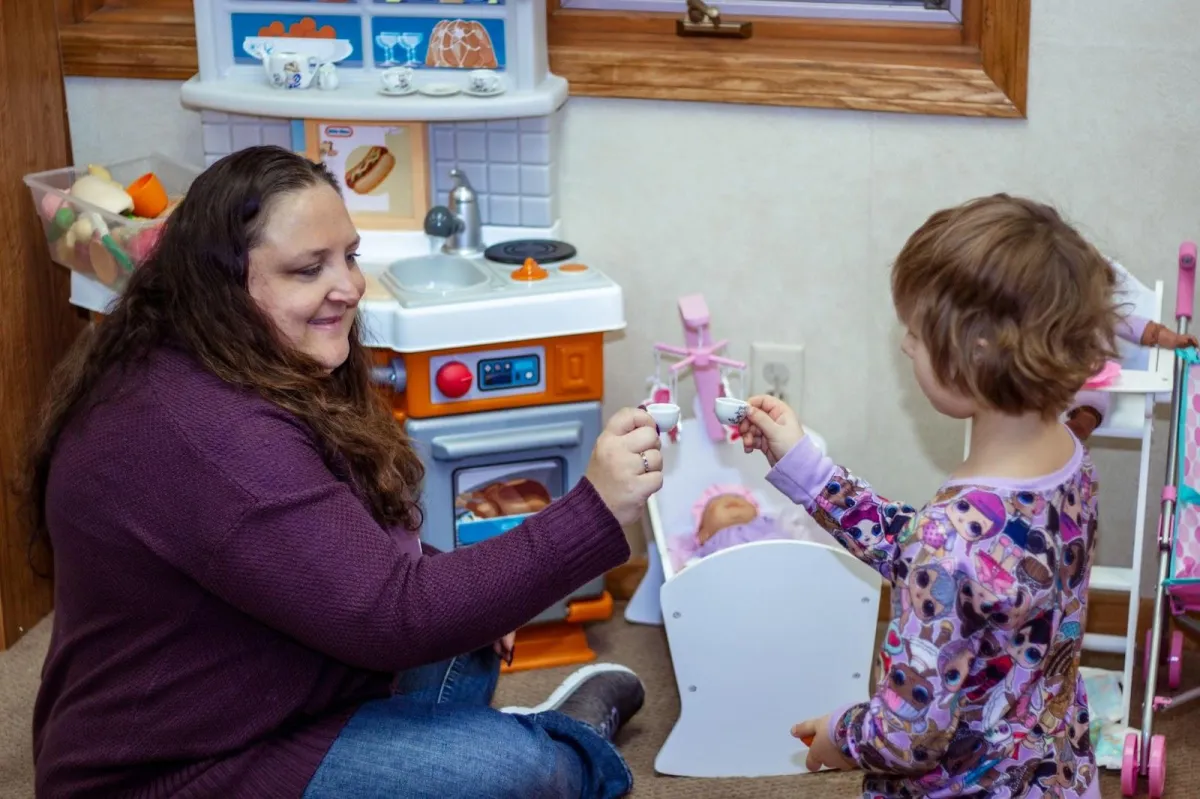
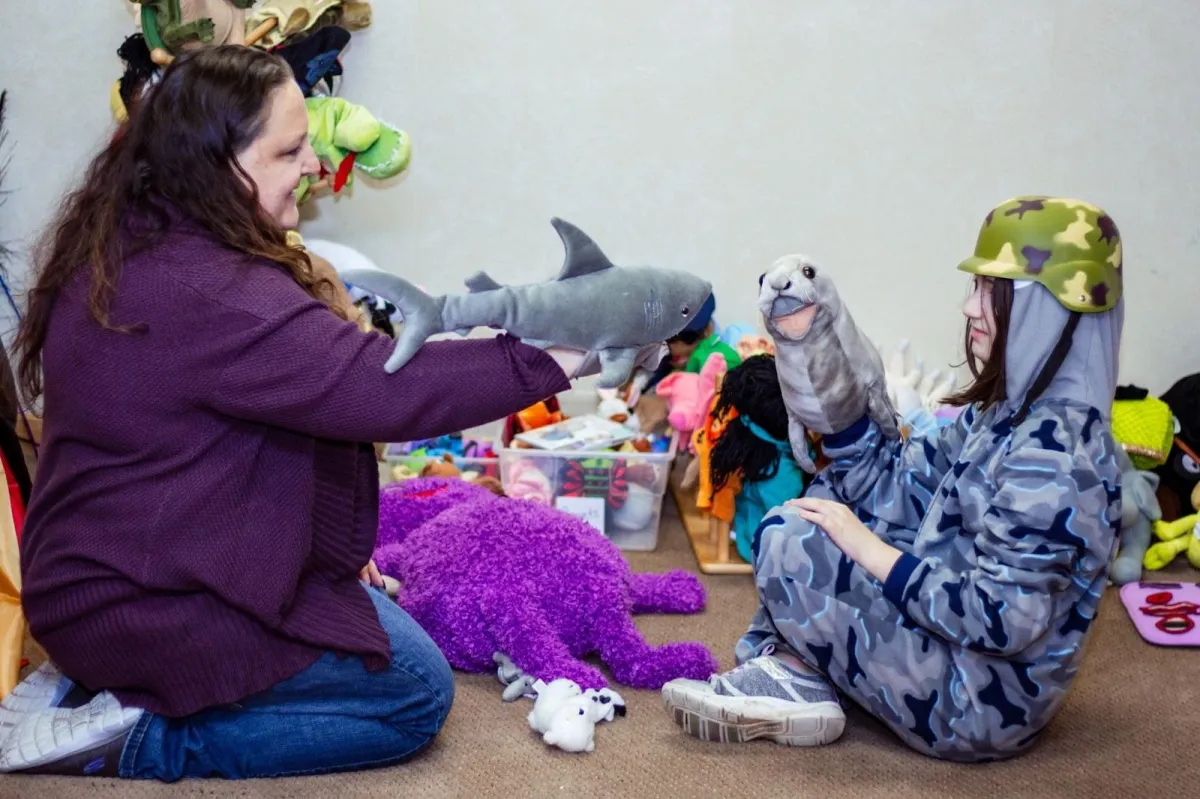
Introducing:
Tiny Toys, Big Messages: A Therapist’s Quick-Start Guide to Meaningful Interventions
Become a better therapist by learning to spot the top 6 themes in play therapy and learn how to respond for faster client progress.
You will learn how to:
1. Spot the hidden emotional and behavioral themes in children’s play and sandtray scenes.
(So you can respond with interventions that truly meet the child’s inner needs.)
2. Decode symbolic expressions—like superheroes, fences, funerals, and monsters—into therapeutic insight.
(No more guessing what the play “means.”)
3. Create targeted, custom interventions that align with the specific play theme—whether it’s power and control, grief, mastery, or trauma.
(Tailor your responses for meaningful progress.)
4. Turn emerging play themes into clear treatment goals and progress markers.
(So you can confidently plan sessions, communicate with caregivers, and document growth.)
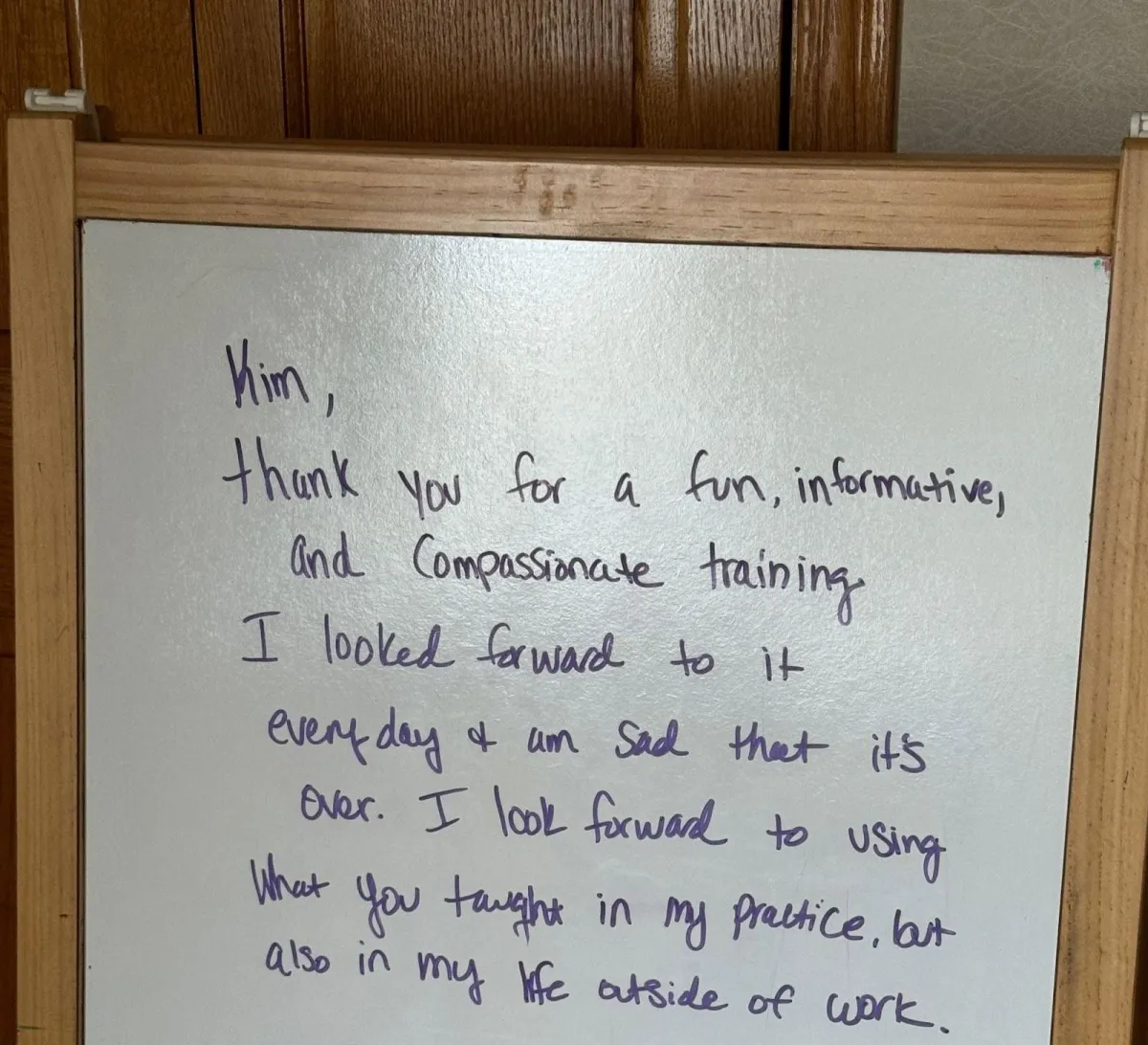
🔧 What You’ll Get Inside This Guide
This guide gives you a simple, powerful framework to help you identify and work with play and sandtray themes in clinical sessions. It walks you through what to look for, what it means, and how it can guide your treatment planning.
🎭 A Breakdown of 6 Core Play Themes
• Learn to identify common themes such as power and control, aggression, nurturing, and more—so you can finally understand what your client’s play is really communicating.
🧸 Concrete Examples and Red Flags to Watch For
• You’ll get real-life examples of the ways each theme appears in sessions—through miniatures, role play, and storytelling—so you’re never left guessing.
🧠 Symbol-to-Meaning Quick Guide
• Discover how things like fences, superheroes, burials, monsters, and more may represent internal conflicts, emotional needs, or developmental milestones—and how you can respond confidently as a therapist.
✨ Theme-Based Intervention Suggestions
• Know exactly what to do next: how to support, structure, or challenge the child based on the theme they’re exploring—without disrupting their process or interrupting their symbolic work.
📋 Treatment Planning Insights
• Use emerging themes to guide your clinical goals, track progress over time, and communicate clearly and effectively with caregivers, supervisors, and interdisciplinary teams.
📚 Book Recommendations for Each Theme
• Each theme is paired with curated children’s books that can be used for bibliotherapy, classroom read-alouds, or caregiver support. These stories help children name, explore, and integrate the emotions and experiences expressed in play.
🧑🏫 Parent & Teacher Support Suggestions
• For every theme, you’ll find practical tips for caregivers and educators—including what to look for at home or in the classroom, what the behavior may be communicating, and how to respond with empathy and structure. These tools help extend the therapeutic work into the child’s broader environment.
This guide saves you from the guesswork, the second-guessing, and the overwhelm. It gives you clarity, confidence, and a therapeutic compass—so you can focus less on figuring it out and more on connecting with your client and facilitating change.
"Kim. I love her teaching style!!! She is very interactive and
you will come away with plenty of new skills. Your career and skills
are worth the investment!"
—Dr. Kris Yells, Ph. D., LCSW-S, ICST, CATP
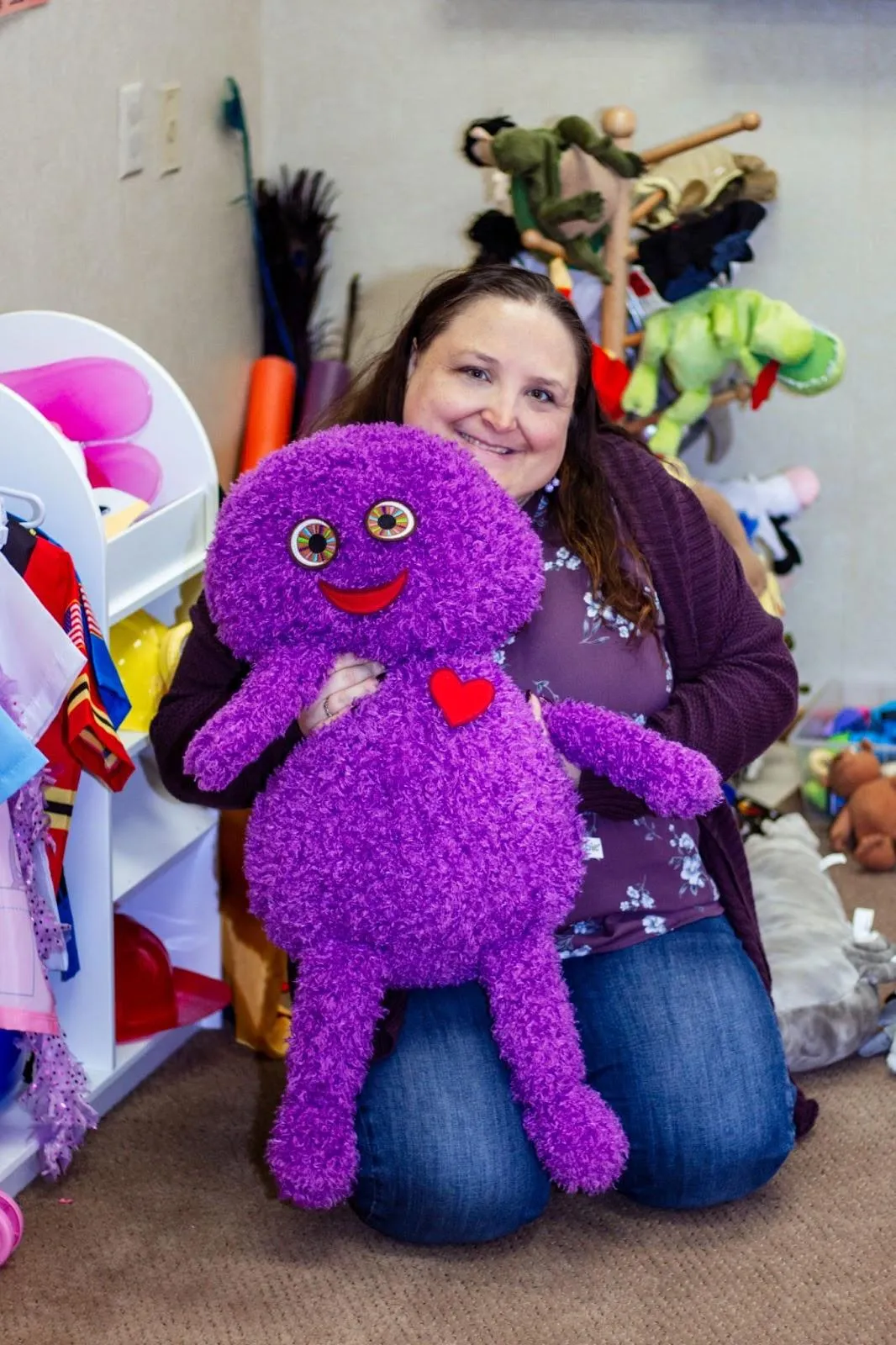
My name is Kim Feeney, LISW, RPT.
I help play therapists and child clinicians recognize and respond to the symbolic language of play so they can confidently guide healing without feeling lost in the messiness of metaphor.
There was a time in my play therapy journey when I felt unsure—watching children create rich play scenes but not always knowing what they meant or how to respond. I worried I was missing something important.
Now, I feel confident and grounded in my work. I help play therapists like you decode the language of play so you can guide healing with clarity and intention.
This guide will show you how to spot recurring play and sandtray themes, understand what they mean, and respond with targeted, meaningful interventions—all while staying grounded in your clinical intuition and training.
Without it, you might continue second-guessing whether that volcano or villain scene “meant something”… or miss an important therapeutic opportunity altogether.
But with it, you’ll finally have a clear roadmap for decoding what’s happening in the tray (or on the floor)—and using that insight to move the child’s therapy forward with purpose.
💸 Just $7 for a Game-Changing Resource
For the cost of a latte, you’ll get a practical, insight-packed guide that helps you:
• Decode symbolic play with confidence
• Plan more meaningful interventions
• Communicate clearly with caregivers
• Stop second-guessing and start getting results
No fluff. No overwhelm. Just a clear, focused tool you’ll use again and again in your sessions.
→ Grab your copy for just $7 and start seeing what the play is really telling you.
"The skill and knowledge demonstrated by Kim continues to
amaze me. She is an amazing trainer and has created a space
for individuals to grow and learn."
—Carmen Jimenez-Pride, LCSW, RPT-S, ICST
Get the clarity and confidence you need.
With this Quick-Start Guide, you’ll finally have language for what you’re seeing—and tools to respond effectively.
© MONARCH MASTERY | ALL RIGHTS RESERVED | TERMS & CONDITIONS | SITE BY FUNNEL GORGEOUS

